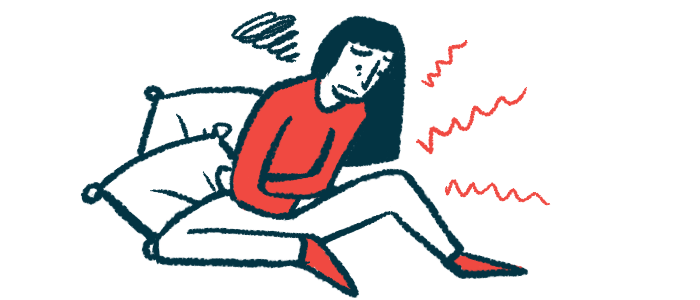Givlaari successfully treats acute attacks in woman with AIP, 36
Report is 1st to support therapy as effective in acute intermittent porphyria
Written by |

Treatment with Givlaari (givosiran) successfully resolved acute attacks of acute intermittent porphyria (AIP) in a 36-year-old woman who had been experiencing recurrent bouts of abdominal pain over the prior three years.
According to researchers, this is the first report supporting the use of Givlaari “as an effective therapeutic alternative” for acute attacks in AIP.
The woman’s case was described in a report titled “Acute intermittent porphyria: acute flare-up resolved with givosiran,” which was published as a letter to the editor in the journal Medicina Clinica.
Prior to Givlaari, treatment with hemin failed to resolve woman’s symptoms
AIP, the most common form of acute porphyria, is a rare genetic disease characterized by disruptions in the production of heme, a molecule that plays a key role in oxygen transport in the body.
The disease is caused by mutations in the HMBS gene, which encodes an enzyme that is involved in the first steps of heme production. As a result, heme precursors called porphyrins, such as 5-aminolevulinic acid (ALA) and porphobilinogen (PBG), accumulate to toxic levels, leading to sudden and severe attacks primarily characterized by abdominal pain and sometimes by neurological changes.
While most patients experience only a few attacks during their lifetime, a small fraction experience recurrent attacks. Such repeated attacks can lead to long-term complications, such as kidney failure and high blood pressure.
In this report, clinicians in Spain described the case of a woman with recurrent AIP whose acute attacks were resolved after treatment with Givlaari.
[This case] opens the way to the development of new studies with this treatment as a targeted therapy during outbreaks in selected patients.
The women sought treatment at a hospital in Barcelona after experiencing intermittent abdominal pain for three weeks. Her clinical history included recurrent abdominal pain with outbreaks for the previous three years.
A physical examination showed she had high blood pressure and a faster than normal heart rate, but found no other issues. Blood work showed no changes in red blood cell and white blood cell numbers, nor in kidney or liver function.
An ultrasound of the abdomen showed potential signs of acute inflammation of the gallbladder. That led the woman to undergo a laparoscopic cholecystectomy — a minimally invasive surgical procedure to remove the gallbladder.
After the surgery, however, she experienced worsening abdominal pain, which was accompanied by progressive weakness of her arms and legs. She also showed low level of consciousness and experienced respiratory difficulties, which required admission to intensive care for intubation, or assisted breathing.
At this time, clinicians suspected AIP, which was confirmed by the Hoesch test, a qualitative test that can be used to detect the presence of PBG in the urine. Treatment was started with hemin, an on-demand therapy given to control porphyria attacks, and glucose, or blood sugar.
PBG and ALA were subsequently found in blood, urine, and feces samples, and a genetic test revealed the presence of a mutation in the HMBS gene.
After discontinuing treatment with hemin, the woman experienced a total of three attacks within one month. Clinicians then opted to start her on Givlaari, which seemed to resolve the attacks.
Hemin was completely withdrawn after she started treatment with Givlaari. At a one-year follow-up, she had experienced no new attacks and had made a full recovery.
According to authors, this case “opens the way to the development of new studies with this treatment as a targeted therapy during outbreaks in selected patients.”






